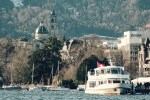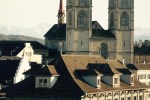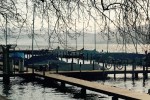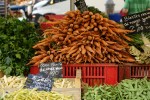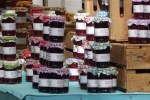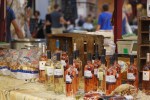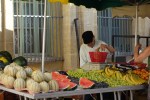A Cretan Odyssey | Part 5 – Spinalonga, The Island of No Return
As my last few posts have hopefully demonstrated, the bay of Mirabello in Eastern Crete is every bit as beautiful as the name suggests. And yet its coastline, fractured by little spin-offs of mini mountain islands tracing the coast yet a water’s breadth apart, holds a darker, more ugly secret: Spinalonga. The name sounds like the setting for a fairy tale – a spindle perhaps, upon whose thorny point a princess pricks her finger. But this is no fairy island. It is a place which, up until as recently as 1957, was an island cut off from the mainland not just by sea but by law and stigma: it was the home of Crete’s leper colony, an exile for those afflicted with history’s most devastating illness.










Those of you who have read Victoria Hislop’s bestselling novel, The Island, will already know about Spinalonga. Once a fortified stronghold created by the Venetian occupiers of Crete and later taken over by the Ottomans, it was put to use as an island on which to keep leper suffers forcibly separated from the rest of society. Once diagnosed as having the condition, suffers would be flagrantly torn from their families and shipped off to the island. Few would ever leave it.
As Hislop describes, as the decades went on, Spinalonga went from an utterly savage backwater completely devoid of civilisation to a thriving little town in its own right fit with electricity, shops, a theatre, even a hairdresser. And when the discovery of a cure for leprosy meant that the island was finally abandoned in 1957, all of that civilisation was forsaken to the elements. It was in that state of utmost dilapidation that we found Spinalonga when we took a boat from nearby Eloundia to visit this most dejected of locations.









Barren, sun-roasted and rocky, the island on one side was little more than a fortified wall with stark cactus-filled cliffs. However turn landwards and amongst the rubble you could start to see the ghosts of former houses, their shutters half hanging on rusty hinges and their contents long since pillaged. Stone staircases were collapsed under the weight of fallen rubble and punctuated by weeds; the bare bones of wooden beams indicated where once a roof had stood. There is no doubting the feeling of melancholia and claustrophobia which pervades this small tumbledown space, yet few could deny the beauty which was also visible in the stark contrast between rubble and ramshackle, and the stunning turquoise seas which surround the island, and cut it off from the rest of the world.









We left Spinalonga utterly captivated by the historical significance and emotional impact of the leper island. You cannot escape the sadness which permeates the very fabric of this island of imprisonment and social rebuff. Yet across the Cretan winds, uplifted by the deep ultramarine blue of the island’s surroundings, there is the smallest hint of hope – for Spinalonga’s desertion indicated mankind’s dominance over a disease which had ravaged millions since the beginning of time. And that is surely a cause for celebration.
© Nicholas de Lacy-Brown and The Daily Norm, 2018. Unauthorised use and/or duplication of the material, whether written work, photography or artwork, included within The Daily Norm without express and written permission from The Daily Norm’s author and/or owner is strictly prohibited.
















































